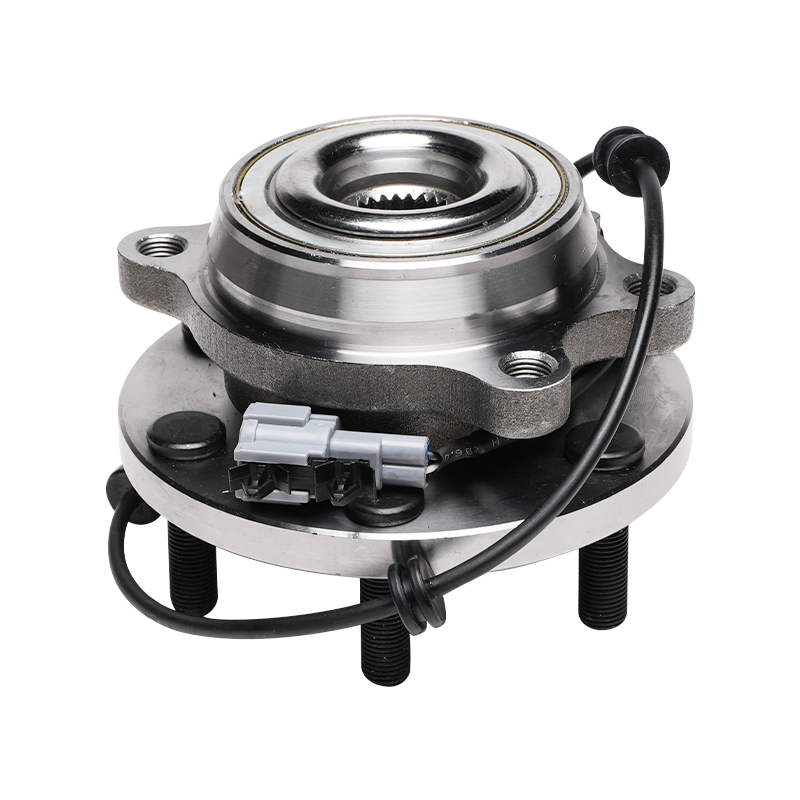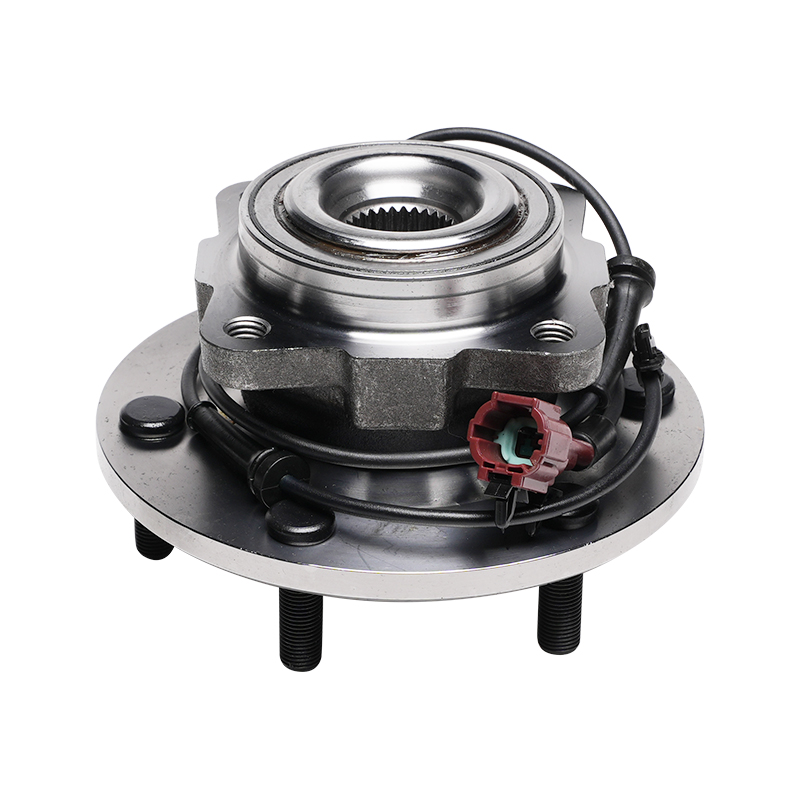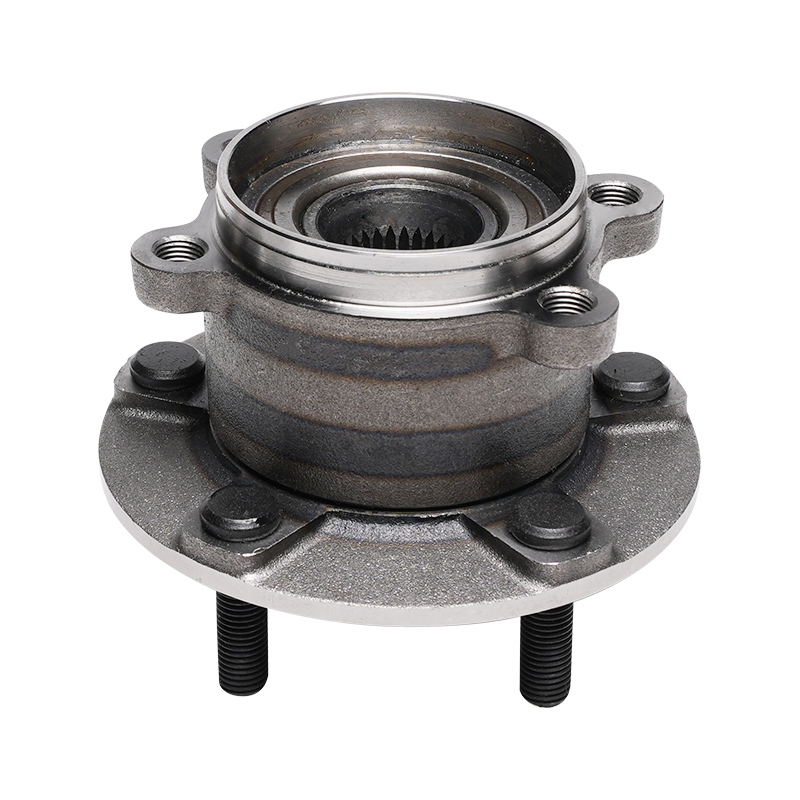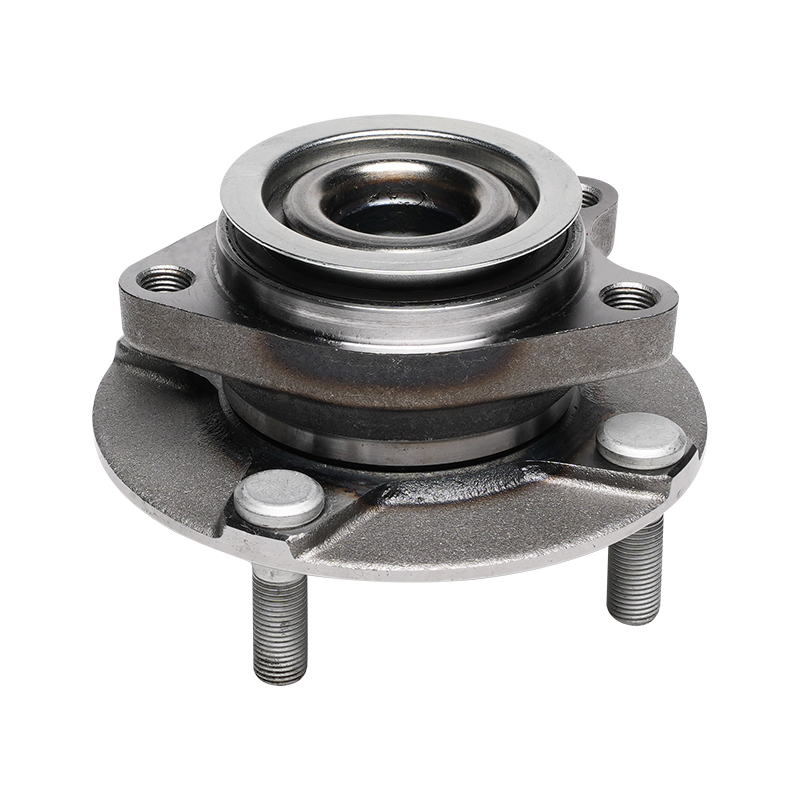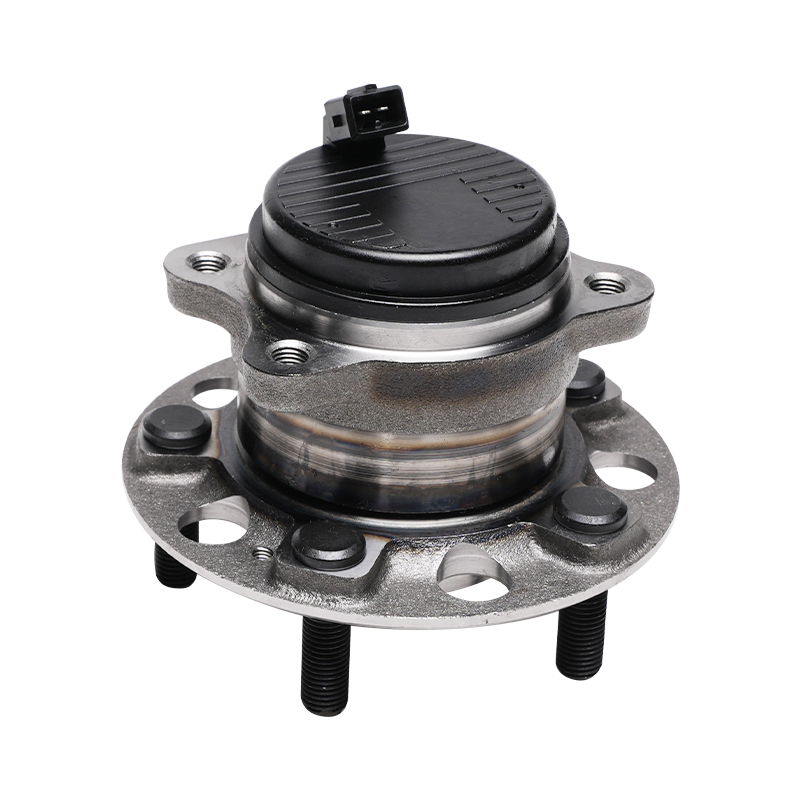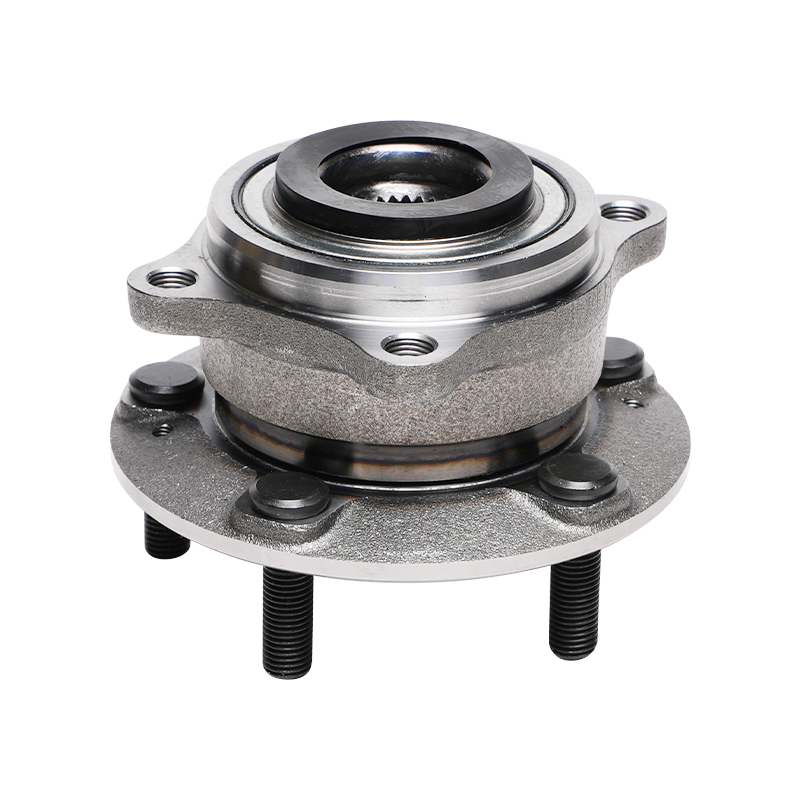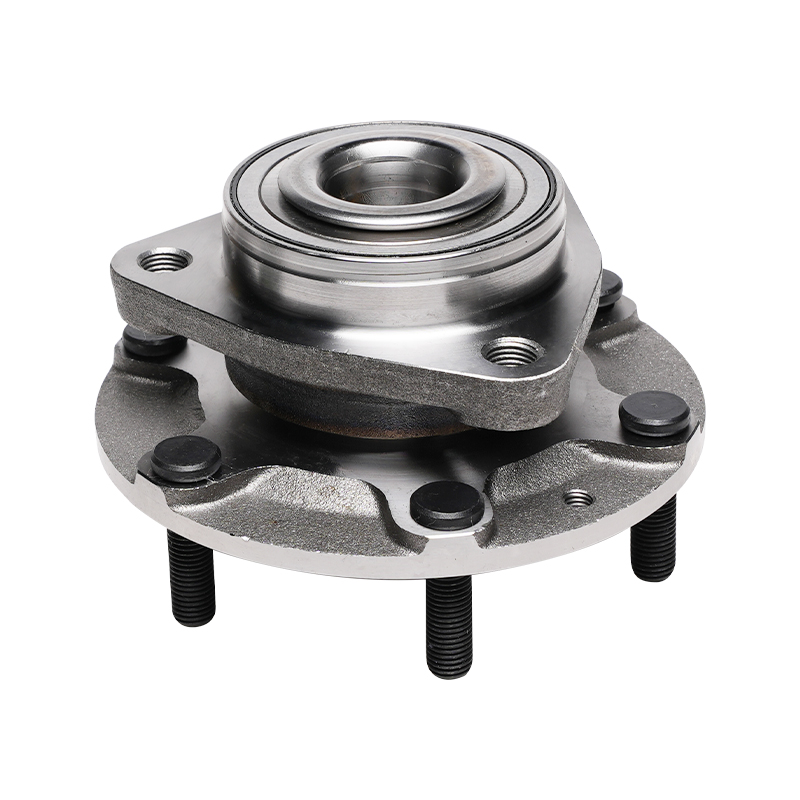Request for a call today
Save Your Wheels: A Pro's Guide to Wheel Hub Bearing Maintenance
 2025.07.22
2025.07.22
 Industry News
Industry News
I. Introduction
A wheel hub bearing is a seemingly minor yet crucial component in modern vehicles. They are the unsung heroes of vehicle safety and driving performance, ensuring that wheels can rotate smoothly and efficiently. However, due due to their hidden location and constant workload, many car owners often overlook their existence until problems arise. This article will delve into the function, types, common symptoms of failure, causes, diagnostic methods, maintenance tips, and replacement procedures for wheel hub bearings. Its aim is to help you better understand this critical component, thereby ensuring your driving safety and the long-term health of your vehicle.
II. Understanding Wheel Hub Bearings
1. Function and Purpose
The primary responsibilities of wheel hub bearings are:
- Supporting the vehicle's weight: They bear the entire weight of the vehicle and are a critical connection point between the wheel and the body.
- Allowing wheels to rotate smoothly with minimal friction: Through their internal rolling elements (balls or rollers), wheel hub bearings significantly reduce friction during wheel rotation, ensuring the vehicle can drive smoothly.
- Maintaining wheel alignment: They help maintain the correct angle and position of the wheels, which is crucial for vehicle handling stability, steering precision, and even tire wear.
- Role in ABS and traction control systems: Many modern wheel hub bearings integrate ABS (Anti-lock Braking System) sensors. These sensors monitor wheel speed and transmit data to the vehicle's ABS and traction control systems to ensure safety during emergency braking or driving on slippery surfaces.
2. Wheel Hub Bearing Components
A typical wheel hub bearing assembly usually includes the following components:
| Component | Description |
| Bearings | Internal rolling elements (ball or roller bearings) responsible for reducing friction. |
| Hub | The component where the wheel is mounted, which fits tightly with the bearing. |
| Seals | Prevent dust, water, and other contaminants from entering the bearing, while also preventing grease leakage. |
| ABS Sensor | (If integrated) Used to monitor wheel speed. |
| Bearing Grease | Fills the inside of the bearing, providing lubrication and heat dissipation. |
3. Types of Wheel Hub Bearings
With the development of automotive technology, wheel hub bearings have also evolved through multiple generations:
| Type | Description |
| Generation 1 | Separate bearing and hub components, requiring individual installation. |
| Generation 2 | Bearing and flange (the flat surface for wheel mounting) are integrated, simplifying the installation process. |
| Generation 3 | Bearing, flange, and ABS sensor are all integrated into one unit, further improving installation efficiency and system reliability. |
| Tapered Roller Bearings vs. Ball Bearings | Tapered roller bearings are typically used for heavier radial and axial loads, while ball bearings are known for their low friction and high-speed capabilities. Modern cars mostly use maintenance-free sealed bearing units. |
III. Common Symptoms of a Bad Wheel Hub Bearing
Wheel hub bearing failure often exhibits clear symptoms. Timely identification of these symptoms is crucial to prevent more severe damage.
1. Noise
One of the most common symptoms is noise:
- Humming, growling, or grinding noise: These sounds usually become louder with increasing vehicle speed and may be particularly noticeable at certain speeds.
- Changes in noise during turns: When the vehicle turns, the noise from a damaged bearing may change. For example, if the right bearing is damaged, the noise might become louder when turning left (as the right bearing bears more load).
2. Vibration

- Felt through the steering wheel or floorboard: A damaged wheel hub bearing can cause vehicle vibration, which can be felt through the steering wheel, seats, or floorboard.
- Worsens with speed: Vibration typically intensifies with increasing vehicle speed.
3. Loose Steering/Play in the Wheel
- Excessive movement when wiggling the wheel at 12 and 6 o'clock positions: When the vehicle is lifted, if you feel significant looseness or play when shaking the wheel at the top and bottom (12 and 6 o'clock positions), this may indicate a wheel hub bearing issue.
4. ABS Light Illumination
- If the integrated ABS sensor in the wheel hub bearing fails, the vehicle's ABS warning light may illuminate.
5. Uneven Tire Wear
- A damaged wheel hub bearing can lead to inaccurate wheel alignment, causing abnormal tire wear patterns, such as feathering or sawtooth wear.
6. Pulling to One Side
- In some cases, a severely damaged wheel hub bearing may cause the vehicle to slightly pull to one side while driving.
IV. Causes of Wheel Hub Bearing Failure
Wheel hub bearing failures are not always due to quality issues; various factors can lead to their damage.
1. Wear and Tear
- Natural aging: Over time and with accumulated mileage, the grease inside the wheel hub bearing can degrade, and the rolling elements can wear out, eventually leading to failure. This is the most common cause.
2. Impact Damage
- Potholes, curbs, accidents: When a vehicle drives over potholes at high speed, hits a curb, or is involved in an accident, the wheel hub bearing can suffer severe impact, leading to internal structural damage or deformation.
3. Contamination
- Water, dirt, road salt ingress: If the bearing's seal is damaged or aged, contaminants like water, dust, sand, or road salt (in winter) can enter the bearing, contaminating the grease and accelerating corrosion and wear.
4. Improper Installation
- Over-tightening, under-tightening: During wheel hub bearing replacement, improper installation torque (either too tight or too loose) can damage the bearing. Over-tightening leads to excessive internal stress, while under-tightening causes excessive play and vibration.
5. Manufacturing Defects
- Rare: Although uncommon, early bearing failures due to manufacturing defects can occasionally occur.
6. Vehicle Modifications
- Large wheels, aggressive offsets adding extra strain: Installing non-OEM large wheels, using aggressive wheel offsets, or lowering the suspension can alter the wheel's geometry and impose additional loads on the wheel hub bearing beyond its design limits, thereby shortening its lifespan.
V. Diagnosis and Inspection
If you suspect a wheel hub bearing issue, professional diagnosis and inspection are recommended.
1. Professional Inspection
- Recommended: Professional automotive technicians have the experience and specialized tools to diagnose wheel hub bearing problems accurately. They typically use lifts, stethoscopes, and other tools for detailed inspection.
2. DIY Inspection Methods

For car owners with some mechanical aptitude, the following basic checks can be attempted:
- Jacking up the vehicle and checking for wheel play: Safely jack up the vehicle so the wheel is off the ground. Grasp the wheel at the 12 and 6 o'clock positions with both hands and firmly rock it back and forth. If you feel significant looseness or hear a "clunking" sound, it may indicate a bearing problem. Then, try grasping the wheel at the 3 and 9 o'clock positions and rocking it again to check for radial play.
- Listening for noises during a test drive: In safe driving conditions, drive at various speeds and try to listen carefully for abnormal humming, growling, or grinding noises, especially when turning (e.g., slightly wiggling the steering wheel left and right).
- Visual inspection: Check the area around the hub for grease leaks or obvious physical damage.
3. Basic Inspection Tools Required
| Tool | Description |
| Jack and Jack Stands | For safely lifting and supporting the vehicle. |
| Gloves | For hand protection. |
| Flashlight | For better visibility during inspection. |
VI. Maintenance and Longevity
Wheel hub bearings are generally considered maintenance-free components, but good driving habits and regular inspections can help extend their lifespan.
1. General Tips
- Regular vehicle inspections: During vehicle maintenance, ask your technician to check the condition of the wheel hub bearings.
- Avoiding potholes and rough roads: Try to avoid driving over potholes, speed bumps, or uneven roads at high speeds to reduce impact on the bearings.
- Proper tire inflation: Maintaining correct tire pressure helps distribute vehicle weight evenly, reducing the burden on the bearings.
2. When to Replace?
- Based on symptoms: Once any of the aforementioned symptoms of wheel hub bearing failure appear, it should be inspected immediately, and replacement considered. Early detection and replacement can prevent more severe damage, such as wheel detachment or brake system failure.
- Manufacturer recommendations: Although most wheel hub bearings do not have a specified replacement interval, any specific recommendations from the manufacturer should be followed.
3. Importance of Quality Replacement Parts
- When replacing wheel hub bearings, always choose high-quality OEM (Original Equipment Manufacturer) or reputable aftermarket parts. Inferior bearings may fail again quickly and pose safety risks.
VII. Replacement Process (Overview)
Replacing a wheel hub bearing is a relatively complex task requiring specialized tools, and it is generally recommended to be performed by an experienced technician.
1. DIY vs. Professional Repair
- DIY: If you have professional tools, extensive automotive repair experience, and a detailed service manual, you can attempt to replace it yourself. However, be aware of the inherent risks.
- Professional Repair: For most car owners, entrusting wheel hub bearing replacement to a professional auto repair shop is a safer and more reliable option.
2. Basic Steps
Here is a general overview of the wheel hub bearing replacement process (not a detailed guide):
- Jacking up the vehicle and removing the wheel: Safely jack up the vehicle using a jack and jack stands, and remove the affected wheel.
- Disconnecting brake components: Remove the brake caliper, brake rotor, and other related components to access the wheel hub bearing assembly.
- Removing the old wheel hub bearing assembly: This may involve removing bolts, nuts, and sometimes using specialized tools (like a hydraulic press) to press out the old bearing.
- Installing the new assembly: Carefully install the new wheel hub bearing assembly, ensuring all components are correctly aligned, and tighten bolts according to the manufacturer's torque specifications.
- Reassembling and testing: Reinstall the brake components and wheel, then perform a road test to check for abnormal noises or vibrations and ensure the ABS system is functioning correctly.
3. Tools and Safety Precautions
- Always wear appropriate personal protective equipment (such as gloves and safety glasses) when performing any repair work.
- Ensure the vehicle is safely supported to prevent accidents.
- Use the correct tools and follow the specific steps and torque specifications in the vehicle's service manual.
VIII. Conclusion
Wheel hub bearings are an indispensable part of vehicle safety and performance. Understanding their function, recognizing symptoms of failure, and performing appropriate maintenance are crucial for ensuring your driving safety. While they are generally maintenance-free, regular inspections and vigilance for abnormal sounds or vibrations can help you detect and address issues before they worsen. When a failure occurs, always choose high-quality replacement parts and consider seeking the help of a professional technician for replacement. By paying attention to your wheel hub bearings, you can not only extend your vehicle's lifespan but also ensure peace of mind and smooth journeys every time.

